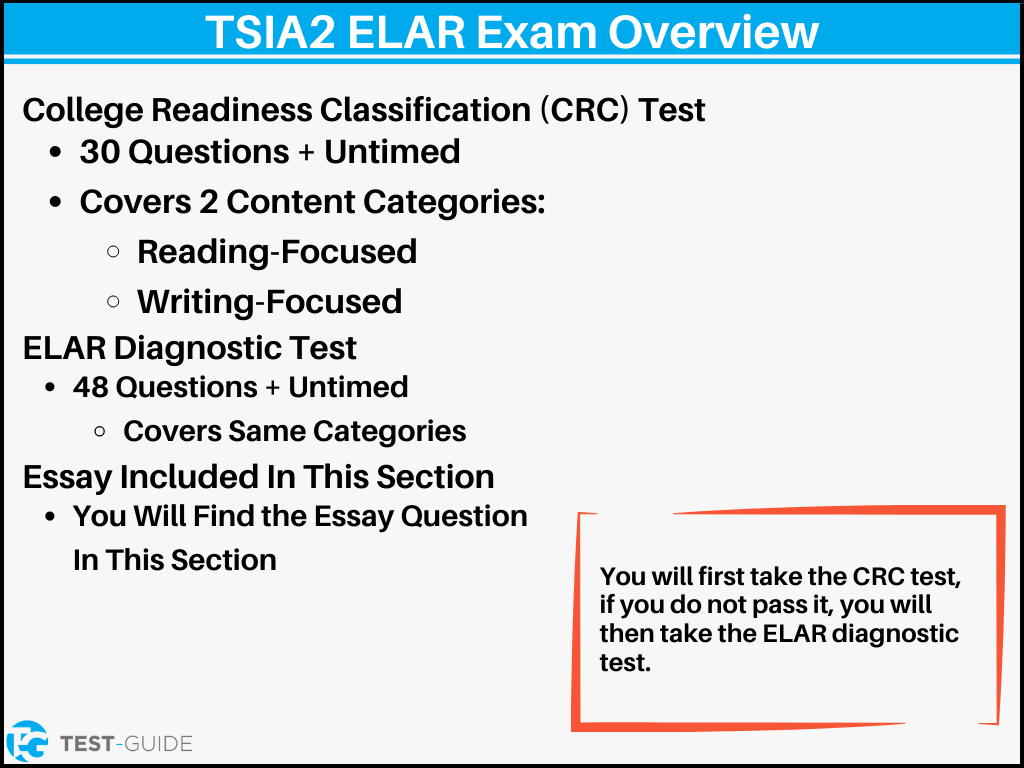Take our TSI reading practice test to prepare for your upcoming exam. We have updated our exams to reflect the changes made for the TSIA2 exam.
Instead of reading and writing being on different exams, they have been combined into the same section of English Language Arts and Reading (ELAR). Start preparing for your TSI ELAR exam below!
TSI Reading Practice Test
If you want to study for other sections of the exam, visit our TSIA2 practice test home.
TSI ELAR Overview
The TSI reading and TSI English sections were combined into the TSI ELAR section when the exam was updated to its new format (TSIA2).
Instead of having to take 2 separate sections, you will now save some time by only having to take 1 section (ELAR). The categories you will be tested on include:
- Reading-Focused: Ability to to comprehend and analyze texts and passages.
- Writing-Focused: Ability to revise and edit sentences, paragraphs, and essays.
The essay will also appear on this ELAR section. You can practice for the essay by visiting our TSI essay page.
There is a College Readiness Classification (CRC) Test and a Diagnostic Test:
College Readiness Classification (CRC) ELAR Test:
- Questions: 30
- Time Limit: Untimed
ELAR Diagnostic Test:
- Questions: 48
- Time Limit: Untimed
You will take the CRC test first. If you do not score 945+ and an essay score of 5+, you will need to take the ELAR diagnostic test.
Want to practice for other sections of the exam? Take more TSI practice tests.
TSI ELAR FAQs
How many questions are on the TSI ELAR exam?
- TSI CRC ELAR Test: 30 Questions
- TSI Diagnostic ELAR Test: 48 Questions
Is there a time limit on the TSI ELAR exam?
There is no time limit on the TSIA2 ELAR exam.
What score do I need to pass the TSI ELAR exam?
CRC score of 945+ and an essay score of 5+ or CRC score below 945 and a diagnostic level of 5 and an essay score of 5+.
When did the TSI ELAR section change?
The TSI was updated on 1/11/21. TSI reading and TSI writing were combined into this new section, TSI ELAR.
This helped streamline the exam for students by combining sections.


